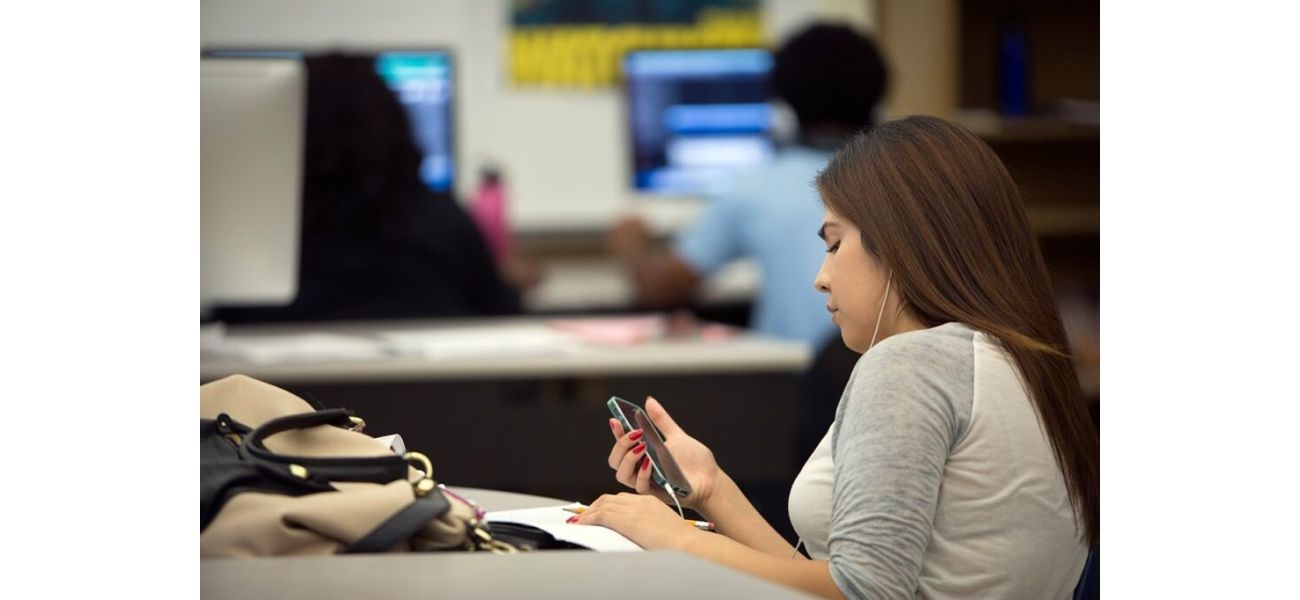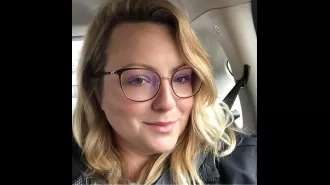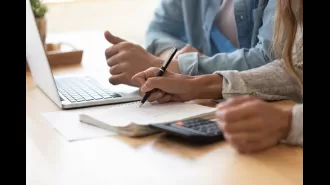California waiting for governor approval on law that limits student cellphone use in schools
New law would make schools implement rules for smartphones by 2026 and regularly reassess them every five years.
August 30th 2024.

Governor Gavin Newsom is expected to sign a new legislation that would make California the fifth state to impose restrictions on student smartphone use in public schools. The bipartisan Phone-Free Schools Act, also known as Assembly Bill 3216, would require school districts to enact smartphone restrictions by July 1, 2026, and review their policies every five years. This move would bring California in line with other states such as Florida, Indiana, Louisiana, South Carolina, and Ohio, which have already implemented statewide restrictions on cellphone use on school campuses.
Assemblymember Al Muratsuchi, a Democrat who co-authored the bill, believes that it is crucial to require school districts to limit or restrict smartphone use in order to not only support student success but also protect their mental health. Governor Newsom has been a vocal advocate for cellphone restrictions in schools and previously approved a similar legislation in 2019, known as AB 272, which authorized school districts to limit or prohibit students' use of cell phones during school hours. In June, he expressed his intention to build on this law and further restrict students' cell phone use, although specific details were not provided.
In a letter addressed to educators across the state, Governor Newsom emphasized the importance of implementing smartphone restrictions as students return to the classroom. The Phone-Free Schools Act was authored by Assemblymember Muratsuchi, along with Republican Assemblymember Josh Hoover, and Democratic assemblymembers David Alvarez and Josh Lowenthal. Hoover, who is also a parent, believes that this is an issue of statewide concern and that it is essential to address it. He stated, "We may have different political beliefs, but as parents, we have all witnessed the negative effects of unrestricted smartphone use on our children."
Muratsuchi, who is also a father to a teenage daughter, introduced AB 272 not only as a state legislator but also as a concerned parent. He cited growing research that shows a relationship between teenage smartphone use and mental health issues such as anxiety, depression, and even suicide. This makes the need for smartphone restrictions in schools even more urgent than before.
According to a survey by Pew Research, 72% of high school and 33% of middle school teachers consider cell phone distractions as a major problem. Another survey by Common Sense Media found that 97% of students use their phones during the school day for an average of 43 minutes. Assemblymember Hoover believes that the key difference between AB 3216 and the existing 2019 legislation is that the former would require all schools in the state to pass policies limiting smartphone use during school hours and review them every five years. There are no specific requirements for districts in the bill to allow flexibility for schools to choose how to restrict or ban cellphone use.
The California School Boards Association, which represents the state's public trustees, has strongly opposed the bill. They argue that it does not consider the significant demographic and ideological differences between the state's 940 school districts and 58 county offices of education. Troy Flint, the association's chief communications officer, believes that both proponents and opponents of the bill have good intentions and are trying to do what is best for students' safety and mental health. However, the association disagrees with Hoover on whether the bill respects local control to a sufficient degree. Flint explains, "We have a diverse range of situations in California, such as students who travel on a bus for an hour to get to school, or students with disabilities. This is a rare issue where everyone has good intentions, but there is a lack of consensus on how to approach it."
Assemblymember Hoover clarified that the Phone-Free Schools Act would not remove any of the exceptions outlined in the existing legislation, such as using phones in case of an emergency or with permission from teachers. Additionally, students have the right to access their phones in response to a perceived threat of danger, such as a school shooting or lockdown.
The bill has received support from the Los Angeles Unified School District, which recently voted to ban students' use of phones beginning in 2025, and the California Teachers Association, one of the state's major teacher unions. The association's president, David Goldberg, stated, "Our union has always been in favor of improving school environments and restricting the use of smartphones on campus."
The issue has divided Bay Area schools, with some expressing support for smartphone restrictions, such as San Mateo High School, which implemented a phone-free policy in 2019. However, other districts, including Livermore Valley Joint Unified School District and Palo Alto Unified School District, have argued that cell phones are necessary for many families and that banning them would not be practical in schools that rely heavily on technology for learning.
Assemblymember Muratsuchi believes that smartphones are still a relatively new technology, and society is still adjusting to its impact. He emphasizes the need to reconsider the culture of constant access to smartphones, considering the growing evidence of its detrimental effects on student education and mental health.
Assemblymember Al Muratsuchi, a Democrat who co-authored the bill, believes that it is crucial to require school districts to limit or restrict smartphone use in order to not only support student success but also protect their mental health. Governor Newsom has been a vocal advocate for cellphone restrictions in schools and previously approved a similar legislation in 2019, known as AB 272, which authorized school districts to limit or prohibit students' use of cell phones during school hours. In June, he expressed his intention to build on this law and further restrict students' cell phone use, although specific details were not provided.
In a letter addressed to educators across the state, Governor Newsom emphasized the importance of implementing smartphone restrictions as students return to the classroom. The Phone-Free Schools Act was authored by Assemblymember Muratsuchi, along with Republican Assemblymember Josh Hoover, and Democratic assemblymembers David Alvarez and Josh Lowenthal. Hoover, who is also a parent, believes that this is an issue of statewide concern and that it is essential to address it. He stated, "We may have different political beliefs, but as parents, we have all witnessed the negative effects of unrestricted smartphone use on our children."
Muratsuchi, who is also a father to a teenage daughter, introduced AB 272 not only as a state legislator but also as a concerned parent. He cited growing research that shows a relationship between teenage smartphone use and mental health issues such as anxiety, depression, and even suicide. This makes the need for smartphone restrictions in schools even more urgent than before.
According to a survey by Pew Research, 72% of high school and 33% of middle school teachers consider cell phone distractions as a major problem. Another survey by Common Sense Media found that 97% of students use their phones during the school day for an average of 43 minutes. Assemblymember Hoover believes that the key difference between AB 3216 and the existing 2019 legislation is that the former would require all schools in the state to pass policies limiting smartphone use during school hours and review them every five years. There are no specific requirements for districts in the bill to allow flexibility for schools to choose how to restrict or ban cellphone use.
The California School Boards Association, which represents the state's public trustees, has strongly opposed the bill. They argue that it does not consider the significant demographic and ideological differences between the state's 940 school districts and 58 county offices of education. Troy Flint, the association's chief communications officer, believes that both proponents and opponents of the bill have good intentions and are trying to do what is best for students' safety and mental health. However, the association disagrees with Hoover on whether the bill respects local control to a sufficient degree. Flint explains, "We have a diverse range of situations in California, such as students who travel on a bus for an hour to get to school, or students with disabilities. This is a rare issue where everyone has good intentions, but there is a lack of consensus on how to approach it."
Assemblymember Hoover clarified that the Phone-Free Schools Act would not remove any of the exceptions outlined in the existing legislation, such as using phones in case of an emergency or with permission from teachers. Additionally, students have the right to access their phones in response to a perceived threat of danger, such as a school shooting or lockdown.
The bill has received support from the Los Angeles Unified School District, which recently voted to ban students' use of phones beginning in 2025, and the California Teachers Association, one of the state's major teacher unions. The association's president, David Goldberg, stated, "Our union has always been in favor of improving school environments and restricting the use of smartphones on campus."
The issue has divided Bay Area schools, with some expressing support for smartphone restrictions, such as San Mateo High School, which implemented a phone-free policy in 2019. However, other districts, including Livermore Valley Joint Unified School District and Palo Alto Unified School District, have argued that cell phones are necessary for many families and that banning them would not be practical in schools that rely heavily on technology for learning.
Assemblymember Muratsuchi believes that smartphones are still a relatively new technology, and society is still adjusting to its impact. He emphasizes the need to reconsider the culture of constant access to smartphones, considering the growing evidence of its detrimental effects on student education and mental health.
[This article has been trending online recently and has been generated with AI. Your feed is customized.]
[Generative AI is experimental.]
0
0
Submit Comment





